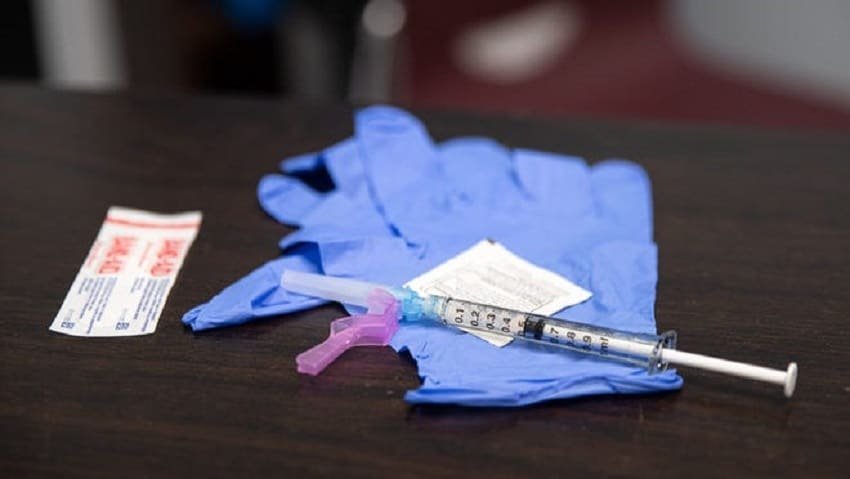As vaccine experts welcomed President Joe Biden’s faster timeline for distribution, they offered some caution about if the companies can achieve their guaranteed doses and delivery dates. While there’s never 100% certainty in manufacturing, pharmaceutical manufacturing is particularly finicky and demanding.

People prefer to think making vaccines is much like making widgets or automobiles but it isn’t, stated Robert Van Exan, president of Immunization Policy and Understanding Translation, a vaccine production talking to firm.
The operation is complex, because of so many variables that vaccine manufacturers can’t rely on every batch enduring towards the finish.
“You could be going along and becoming a particular yield after which out of the blue your yield drops and also you have no idea why,” Van Exan stated. “Test delays or failures, raw material logistics, lot failures and yield problems a few of the types of things that may result in supply disruptions.”
Biden stated Tuesday you will see enough COVID-19 vaccine obtainable in May for each adult within the U.S., nearly two several weeks sooner than his administration predicted three days ago, because of an offer brokered between pharmaceutical giants Merck and Manley & Manley.
That timeline did not surprise experts. Actually, some repeat the U.S. could achieve that milestone by mid-April.
‘Vaccine angels’ are only able to achieve this much:US struggles to really make it simpler to locate COVID-19 vaccination appointments
To obtain there, officials intend on 400 million doses from Moderna and Pfizer-BioNTech, enough to vaccinate 200 million people, along with an additional 100 million doses from the one-shot Manley & Manley vaccine. That’s ample for that nation’s 255 million adults.
The achievement “is incredibly exciting and provides me lots of hope,” stated Melissa McPheeters, a professor of health policy and biomedical informatics at Vanderbilt College Clinic.
“We are within look at turning a large part from the scarcity mindset,” she stated.
The administration utilized the Defense Production Act to forge the collaboration between Merck and Manley & Manley, usually fierce rivals. Additionally, it decided to invest yet another $100 million to improve manufacturing from the vaccine itself and also the vial-filling plants (known as “fill and finished”), two greatest bottlenecks facing the J&J vaccine, White-colored House coronavirus advisor Andy Slavitt stated Wednesday.
Using the manufacturing boost supplied by Merck, Manley & Manley has decided to ship 20 million doses through the finish of March as well as an additional 80 million through the finish of May.
Moderna and Pfizer-BioNTech initially planned to provide their 200 million doses each through the finish of June, but manufacturing the vaccines, according to mRNA technology, switched to be quicker than anticipated, speeding the procedure up with a month, stated Moncef Slaoui, mind from the vaccine development effort throughout the Trump administration, told USA TODAY.
The faster pace of three approved vaccine developments can often mean doses is going to be abundantly available inside a month, some experts say.
“I’d reckon that by mid- to late-April, all adults who would like vaccine can have it,” stated Dr. Trudy Larson, dean from the school of community health sciences in the College of Nevada-Reno. “At that time, I’d think a large push would start to get all college-going students vaccinated.”
‘Somewhere inside, the vaccine got overpromised’:The way the COVID-19 vaccination process switched chaotic and confusing
The Biden administration has guaranteed to possess “enough vaccines for each adult through the finish of May.” There’s some wiggle room inside.
Officials didn’t say every adult could be fully vaccinated at that time, which may mean two doses for that Pfizer-BioNTech and Moderna shots. Additionally they did not state that shots could be in arms however that vaccine could be available.
Still, getting enough doses to provide a minumum of one to each adult is definitely an impressive accomplishment, stated Dr. George Rutherford, an epidemiologist and biostatistician in the College of California, Bay Area.
“It’s wonderful, it is a huge milestone,” he stated.
Now, the next thing – convincing individuals that aren’t clamoring to obtain vaccinated – must come from serious.
“You may still find challenges ahead in working with vaccine hesitancy,” stated Dr. Corey Casper, ceo from the Infectious Disease Research Institute, a nonprofit located in San antonio that conducts global research on infectious illnesses.
Surveys consistently show a lot of Americans aren’t certain about getting immunized against COVID-19. There is however also data that when they see their buddies, coworkers and neighbors being vaccinated, hesitation appears to wane.
Tracking COVID-19 vaccine distribution by condition:The number of individuals have been vaccinated in america?
Not everybody, however, is going to be easily convinced, stated Jeffrey Shaman, a professor of ecological health science and Columbia College, that has been modeling COVID-19 cases nationwide.
“You will see individuals who will need to become chided, or advised, that getting vaccinated is nice not only on their behalf, however for their community as well as for their country,” he stated.
